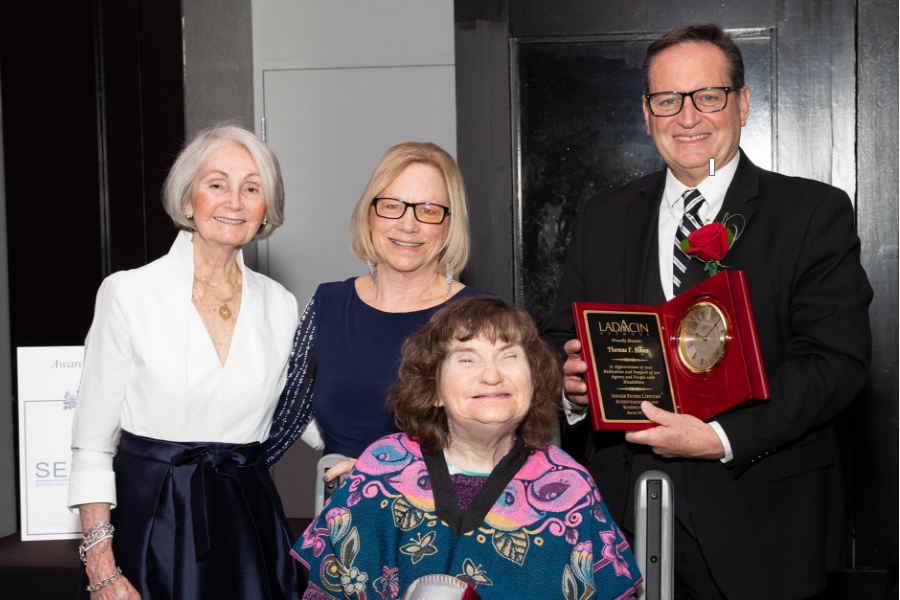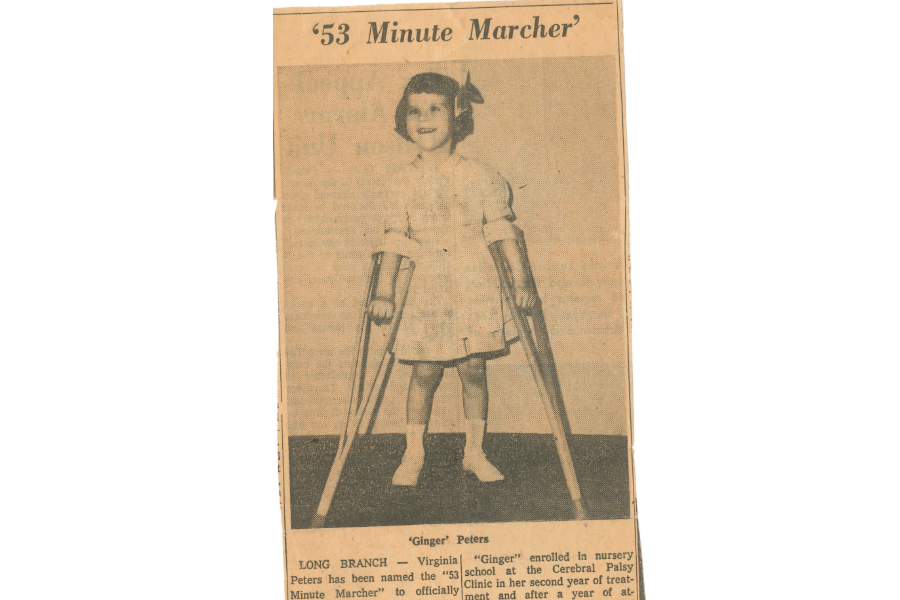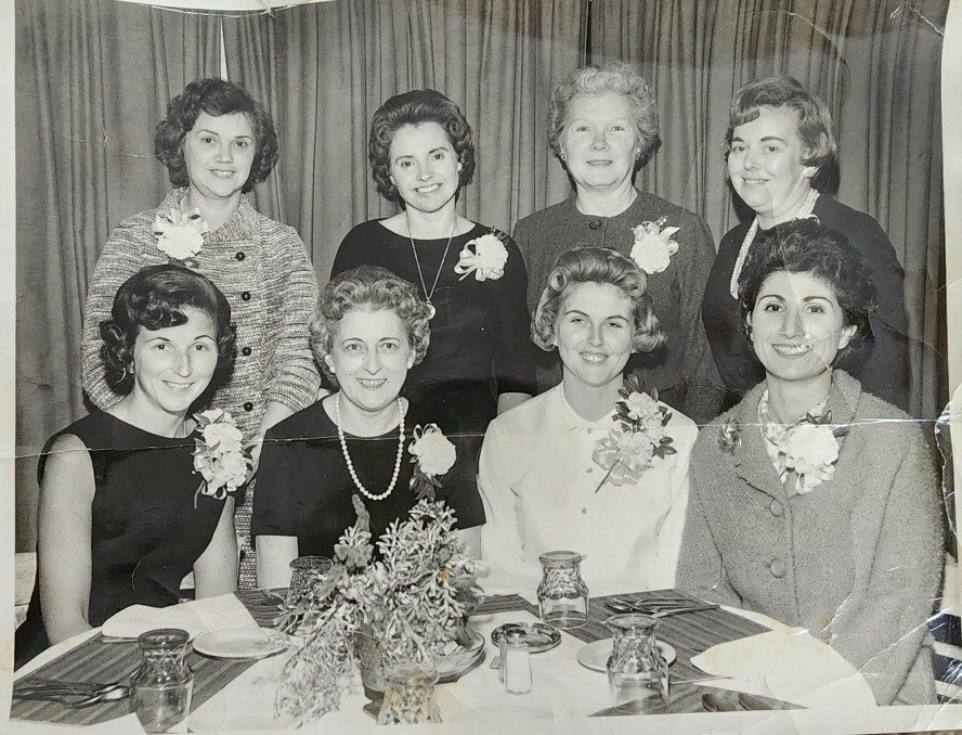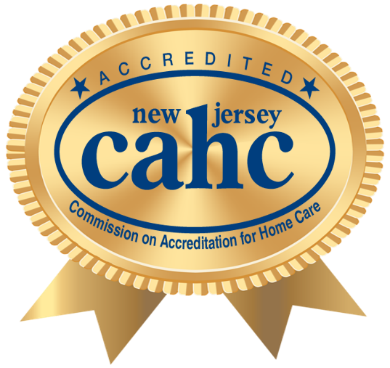Ginger remembers her mom and the women of the first Auxiliary of United Cerebral Palsy. Her mom set an example for Ginger to follow in her footsteps of contributing to the Agency, providing a foundation for ongoing development. Ginger retired from being a professional Life Skills teacher but continues to support the Agency today.


“In 1960 I was a C.P. Poster Girl. I felt uncomfortable getting dressed up and having people take pictures of me. It was fun seeing myself in the newspaper. I was told I was helping the clinic.”
Back in the days when we were watching I Love Lucy, Mickey Mouse Club, Ed Sullivan, Lawrence Welk and listening to Frank Sinatra, Perry Como, and Connie Francis, United Cerebral Palsy was in its infancy.
In January 1956, I was 9 months old and I was going for therapy in an old shack behind Hazard Hospital on Dewey and Washington Streets in Long Branch. It was called the United Cerebral Palsy Clinic. It was truly a grassroots effort. My 14-year-old brother helped paint the rooms. Dr. Otto Lehmann volunteered his time to diagnose and treat with the best knowledge and technology available at the time. We had manual wheelchairs, standing tables, parallel bars, mirrors, crutches, and regular toys as equipment. Compared to what we know and what’s available today, it’s mind boggling to say the least.
When I was 3 years old my mom along with other moms started the nursery school. The floors were bumpy making it a challenge for anyone to walk, especially for those with poor balance. The reason my mom was interested in developing the nursery school was that she felt socialization was the best medicine. The school was only open 3 mornings a week for 5 kids. We had a teacher; a therapist and Nicholas “Buzzy” Connors was a Board member. While I was in school, I remember playing and trying to do things I couldn’t do. Holding my head up, trying to stop drooling, sitting without support, walking, dressing, coloring, and playing with dolls were all enormously frustrating. I followed my mother’s dream socializing with our clients for 20+ years.
The adult classroom started in the late 50’s. The students’ ages ranged from 6 to 21 years old in one room. After 21 they went home to watch TV, not like today’s adult program. I had a home tutor for kindergarten because there was nothing else available. Today our classrooms are correlated by age and ability.
Society back then still believed people like me belonged in closets. My parents were thrown out of hotels, restaurants, and other public places because I was disabled. The vans didn’t have lifts, wheelchairs didn’t have motors, buildings didn’t have ramps or elevators, no curb cuts or accessible bathrooms. We’ve come a long way baby!
Thanks to the First Auxiliary and all their fundraisers, United Cerebral Palsy has grown into LADACIN Network. I wish these women could see the Agency today.









